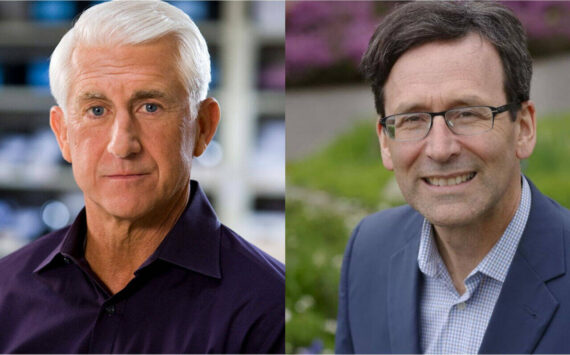Leaders of Washington State Ferries know their navigation of the nation’s largest public ferry system is frustrating those most reliant upon it.
Riders want stable service at levels they enjoyed before the pandemic. It’s not been possible with a lack of boats and too few workers continuing to cause delays and canceled sailings.
But in a community meeting Monday afternoon, the agency’s top brass sought to convey hope to 200 participants that the collective ship is moving, slowly, in a better direction.
Hiring of new employees is outpacing those retiring or leaving and a process for building five new hybrid-electric vessels is finally launched.
“A year ago we were in crisis. Now, we’re in recovery,” said Steve Nevey, the new assistant secretary for Washington State Ferries. “None of the challenges we face are easy. It’s going to take time to get the system where it needs to be.”
He and a half-dozen other agency executives spent most of a two-hour public meeting Monday afternoon answering questions on topics ranging from the building of those hybrid-electric ferries to drivers cutting boarding lines to efforts to restore service on all routes.
A second virtual public hearing is set for 6 p.m. Tuesday. You can register here or watch on TVW.
One positive sign is cancellations dropped from 1,128 in the first quarter of 2023 to 493 in the same period this year. Two weeks ago, the system went a full week without a canceled sailing due to a lack of crew, which had not happened in months, ferries officials said.
“I know it doesn’t feel like it but help is on the way,” said John Vezina, director of planning, customer and government relations.
The ferry system has 21 car-carrying vessels in its fleet, of which 15 are presently in service on a reduced schedule. Five aging boats are undergoing maintenance and one is in drydock for conversion to hybrid-electric propulsion.
Those five new hybrid-electric boats are critical. Last month, the agency began a search for potential builders as Washington will accept bids from shipyards nationwide for the first time in more than half a century.
As envisioned, bids are due in January with one or more contracts getting awarded in February 2025. To get boats delivered faster, the state is prepared to split the contract between two low bidders so that two shipyards could go to work simultaneously.
This could get two vessels delivered as soon as 2028 – still a full decade since the state last added new ferries to its fleet. Those first two ferries will serve the Clinton/Mukilteo and Seattle/Bremerton routes.
Why those routes? They are shorter and are better set up for charging infrastructure, and to access the requisite utilities, officials said during Monday’s meeting.
As for the cost, Matt von Ruden, who oversees the ferries electrification program, said it is estimated it will take between $230 million and $275 million to build each boat “but the market will determine the cost.” The Legislature has set aside $1.3 billion for the purchase.
With a competitive bidding process anticipated, he said he is confident the final price offer “will be the best cost.”
Some participating in the virtual meeting asked if it would be quicker to build diesel-powered ferries like ones on the water now. The simple answer is “no,” said Nevey.
“We don’t have a design right now. We’d have to start a design from the start,” he said. Lawmakers would need to change the law – the state ferry system is operating under a directive to electrify its fleet – and provide funding, he said.
“It is not faster. Hybrid-electrics is the quickest path to getting new ferries,” he said.
One of the first subjects broached was what more can be done to curb the criminal act of ferry line-cutting by drivers. It is a traffic infraction and can result in a $139 ticket.
But that’s only if a law enforcement officer sees it happen. Ferry employees are not empowered to issue tickets, Vezina said.
“We all know because we’ve all seen it. We are constrained by state law of what we can do,” Vezina said. Hopefully, those who follow the rules can take a deep breath when it happens and “accept there are people who are going to do this.”
Washington State Standard is part of States Newsroom, a nonprofit news network supported by grants and a coalition of donors as a 501c(3) public charity. Washington State Standard maintains editorial independence. Contact Editor Bill Lucia for questions: info@washingtonstatestandard.com. Follow Washington State Standard on Facebook and Twitter.






